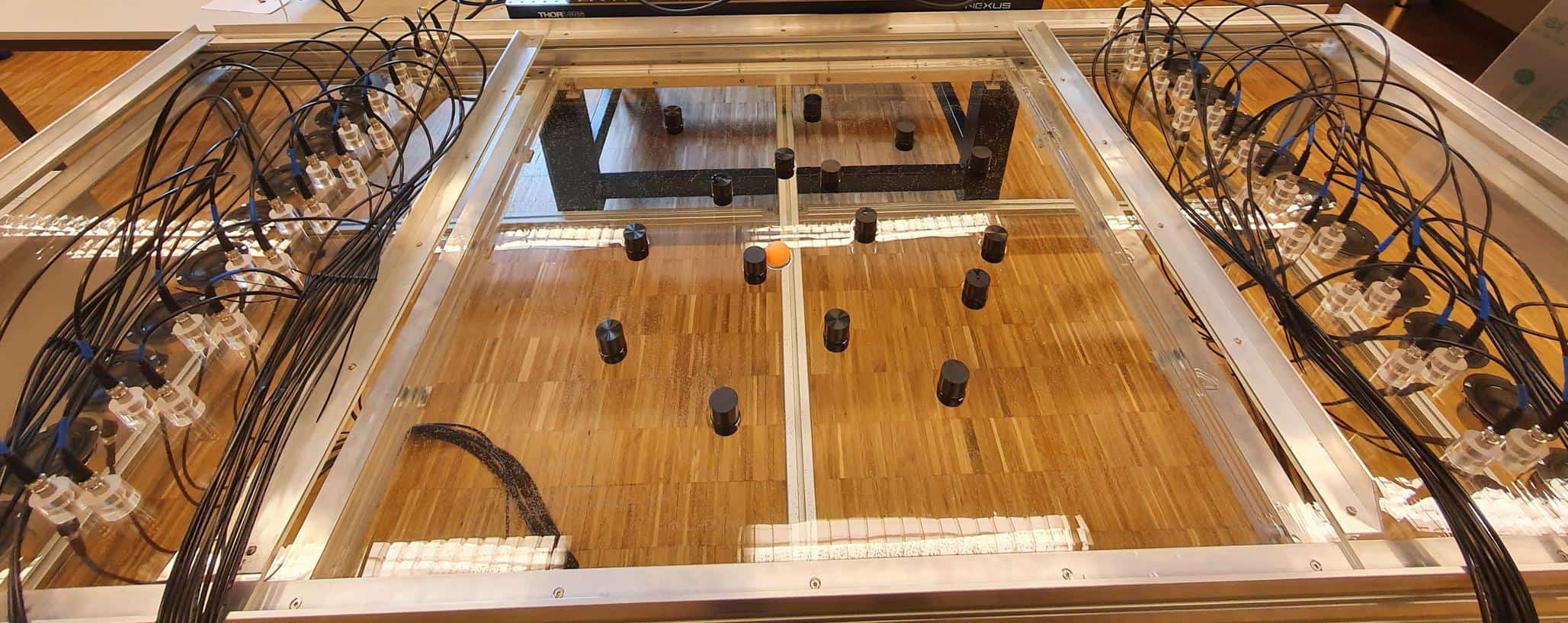Researchers in Switzerland have found a way of using sound waves to manipulate objects in disordered environments such as liquids. Instead of trapping the objects as conventional optical and acoustic tweezers do, the new method guides them using pressure waves, and its developers at the Swiss Federal Institute of Technology in Lausanne (EPFL) say it could be useful for biomedical applications such as targeted drug delivery.
Optical tweezers were invented by the American physicist Arthur Ashkin, who shared the 2018 Nobel Prize for Physics for his role in their development. In these devices, a highly focused laser beam generates optical forces that hold and move micron- or nano-sized objects near the beam’s focus, where the electric field gradient is highest. Their acoustic counterparts work in a similar way, using ultrasonic waves to trap and move objects by creating focalization spots and vortices.
Both techniques are powerful tools for biological research and quantum optics. However, for them to work at their best, the medium through which the object moves must be strictly controlled. The new method overcomes this restriction because it does not require focusing the acoustic waves in the same way, explains Romain Fleury, who heads the Laboratory of Wave Engineering in EPFL’s School of Engineering.
“Instead of forming a vortex to trap and manipulate objects, the idea we developed is to create a hot spot in the pressure field that iteratively pushes the element to the target location, as a hockey stick pushes its puck,” says Fleury. “We call this technique wave-momentum shaping.”
Varying amplitude and phase
To implement their method, Fleury and colleagues generated sound waves at audible frequencies using an array of loudspeakers situated at either end of a tank filled with water. The target of these waves was a plastic ping-pong ball floating on the surface. By varying the amplitude and phase of the sound waves, the researchers were able to vary the wavefronts that reached the ball. These waves then interact with the medium and cause the ball to move.

The researchers monitored the ball’s movement by using an array of microphones to detect the sound waves scattered off it. After sending out three random wavefronts and measuring the scattering matrix for slightly different configurations of the ping-pong ball, the researchers had enough information to deduce the optimal momentum of the acoustic wavefronts they needed to send to translate or rotate the ball however they wanted. They then repeated the procedure to move the ball across the tank, guiding it around obstacles on the way.
“We were very thrilled when the technique worked for the first time,” Fleury tells Physics World.
Promising for non-invasive biomedical applications
While the researchers demonstrated their method with water and a ping-pong ball, Fleury says it will also work for non-spherical objects in more complex, uncontrolled environments – including some found in the human body. This makes it particularly promising for non-invasive biomedical procedures such as delivering drugs to tumour cells or moving cells around using microrobots.
The researchers are considering possible applications in additive manufacturing, too. For example, it might be possible to use the new acoustic tweezer method to arrange microparticles in specific patterns before solidifying them into complex parts.
In this study, which is detailed in Nature Physics, Fleury and colleagues used audible sound waves to move a macroscopic floating object. Their next goal is to miniaturize the technique so that they can implement it in a microscope with micron-sized objects immersed in liquid. They have received funding from the Swiss National Science Foundation (SNSF) to do this, and to lay the foundations for future applications in micro-robotics and biology.
The post Sound waves move objects in liquid appeared first on Physics World.

